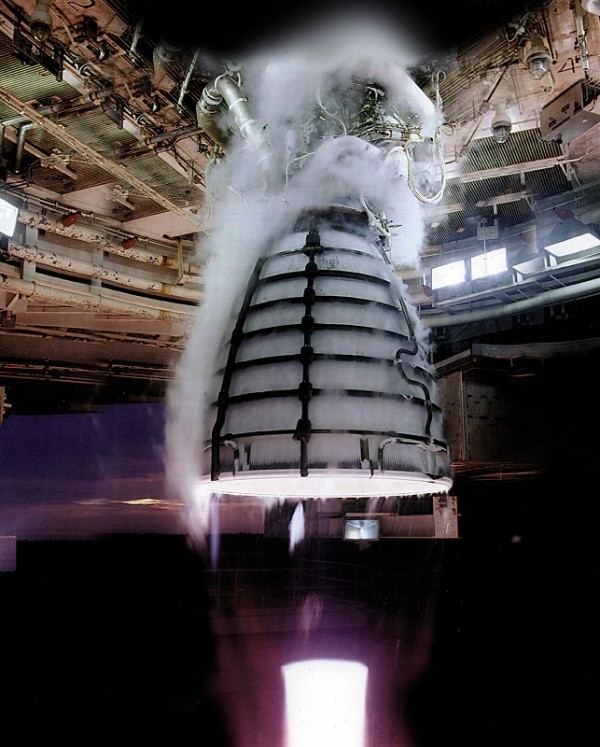By Ana Verayo, | March 14, 2017

The RS-25 engine, which successfully powered the space shuttle, is being modified for America's next great rocket, the Space Launch System. (Aerojet Rocketdyne/NASA)
NASA has released a breathtaking 360-degree video footage of the new rocket engine for Mars being tested. This engine is capable of delivering 500,000 pounds of thrust. It will be used to power NASA's Orion mission which will take the first human explorers beyond the moon.
NASA engineers are carrying out a series of crucial tests for the RS-25 engines this year before the maiden flight of the Space Launch Vehicle. The SLS spacecraft is required to fire a 109 percent thrust level and carry two million pounds of thrust. NASA officials are making sure that these engines can perform at more powerful levels during different launches and missions.
Like Us on Facebook
The first RS-25 engine test for the year was conducted at the Stennis Space Center last month where it blasted for 380 seconds so that engineers can track it under operating conditions. Stennis staff were able to capture incredible overhead footage of the rocket test with a drone including a 360-degree angle video.
NASA's new SLS mission aims to transport the first astronauts into deep space missions and long duration flights, which will include asteroid mission and Mars. The first four SLS missions will utilize the remaining engines from the Space Shuttle Program which are also undergoing extensive tests at Stennis.
As for the new RS-25 engines, they will be paired together with powerful rocket boosters that will launch NASA's Space Launch System rocket along with the Orion mission. These new rockets will launch the Orion capsule spacecraft from the NASA Kennedy Space Center in November 2018.
The first SLS Orion mission will launch an unmanned Orion capsule within the Distant Retrograde Orbit which is farther than any Apollo mission spacecraft has ventured out. This first unmanned Orion mission will be known as the Exploration Mission-1 that will span a period of 22 days. NASA engineers will test the system readiness and operations for future manned missions.
-
Use of Coronavirus Pandemic Drones Raises Privacy Concerns: Drones Spread Fear, Local Officials Say

-
Coronavirus Hampers The Delivery Of Lockheed Martin F-35 Stealth Fighters For 2020

-
Instagram Speeds Up Plans to Add Account Memorialization Feature Due to COVID-19 Deaths

-
NASA: Perseverance Plans to Bring 'Mars Rock' to Earth in 2031

-
600 Dead And 3,000 In The Hospital as Iranians Believed Drinking High-Concentrations of Alcohol Can Cure The Coronavirus

-
600 Dead And 3,000 In The Hospital as Iranians Believed Drinking High-Concentrations of Alcohol Can Cure The Coronavirus

-
COVID-19: Doctors, Nurses Use Virtual Reality to Learn New Skills in Treating Coronavirus Patients







